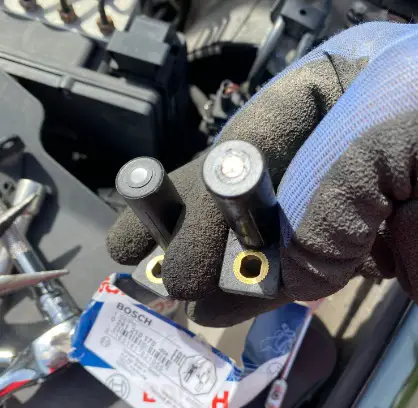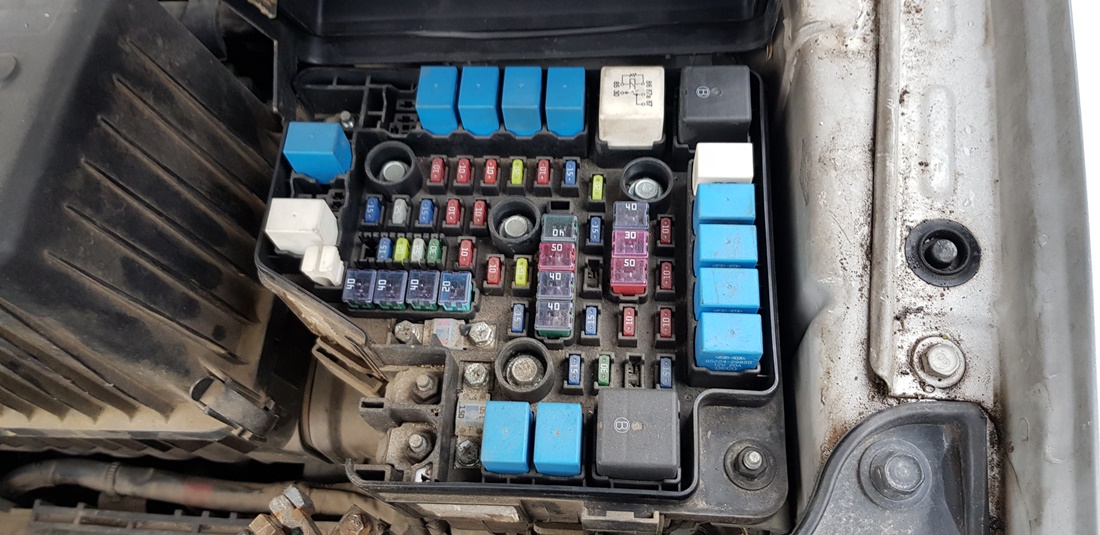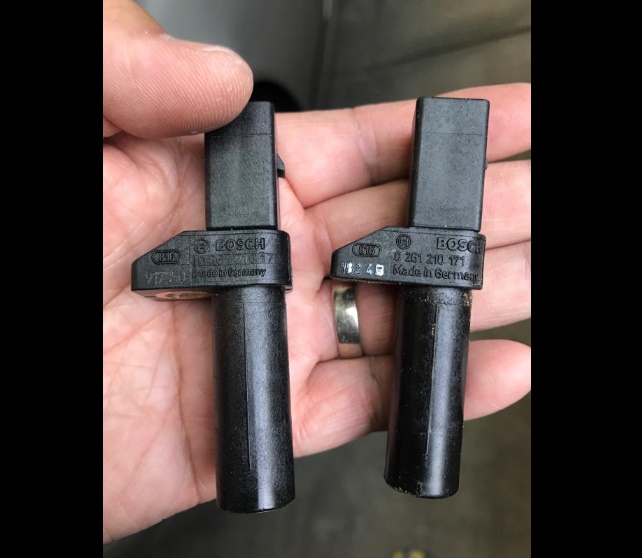Although you don’t see many driveshafts breaking down every day, like any other parts the driveshaft has a lifespan too. A rough estimate of a driveshaft lifespan is around 75,000 miles.
So, if your vehicle has around 75,000 miles, what are the signs and symptoms that you must pay attention to if your driveshaft is about to break down? More importantly, is it safe to drive with a bad driveshaft?
Key Takeaway
- A car driveshaft transfers torque from the engine to the wheels, allowing them to rotate and propel the vehicle forward.
- When driving with a bad driveshaft, potential safety hazards can include loss of control over the vehicle, compromised steering ability, increased risk of accidents or collisions, and potential damage to other drivetrain components that could lead to further malfunctions on the road.
- If your driveshaft is failing or has already failed, you won’t be able to drive your vehicle any further. You could get stuck on the side of the road and all you can do is call a tow truck.
Is It Safe To Drive With a Bad Driveshaft

It is not safe to drive with a bad driveshaft as it can lead to loss of power, difficulty in turning, and potential safety hazards such as the part completely getting detached from the vehicle and hitting other cars.
The driveshaft will give you warning signs before it breaks down. It is possible to drive your vehicle with a bad driveshaft, but it is not wise to do so for a long period of time.
Once you notice excessive vibrations or a clunk noise every time you engage your transmission, it is a very common sign that your driveshaft is failing.
At this point, it is not safe to drive with a bad driveshaft. In the least dangerous scenario, you could lose power to the axle.
You won’t be able to drive the vehicle any longer. But, you could be driving on a highway and the driveshaft could snap in half and parts of the driveshaft could detach and you would be dropping parts as you drive.
That is not a safe scenario for you and the drivers behind you because one small bolt could rip a tire.
How Long Can You Drive With A Bad Drive Shaft?

If the driveshaft has only started to go bad, you can drive for at least 500 miles. However, if you hear abnormal noise coming from the driveshaft which suggests serious damage, you should get your vehicle to the mechanic as soon as possible.
Continuing to drive with a broken or damaged driveshaft can lead to additional damage, including potential harm to the transmission.
It is safer to drive for a short distance in low-speed areas, such as city streets, if necessary.
However, driving on a highway with a bad driveshaft is not recommended due to the higher speeds involved and the increased risk of further damage.
What Happens If a Driveshaft Fails While Driving?
If a driveshaft fails while driving, it can have serious consequences such as loss of power transmission from the engine to the wheels will result in a sudden loss of propulsion, causing the vehicle to come to a halt.
This can be extremely dangerous if it happens in the middle of traffic or on a busy road.
Additionally, a failed driveshaft can lead to difficulty in steering and controlling the vehicle, posing a significant risk to the driver and others on the road.
It is important to address any signs of a failing driveshaft promptly to avoid potential accidents and ensure the safety of everyone involved.
How a Car Driveshaft Works

The driveshaft in a car is a spinning tube that plays a vital role in transferring power from the engine to the back of the vehicle at the differential.
It acts as a link between the engine and the wheels, allowing torque (rotational force) generated by the engine to be transmitted to the wheels, propelling the car forward.
The driveshaft connects to the rear of the transmission and transmits the spinning power from the engine to the differential, which then delivers it to the wheels.
It consists of a propeller shaft, a slip joint, and one or more universal joints, depending on the specific vehicle design.
The driveshaft’s main purpose is to deliver rotational energy efficiently and effectively from the engine to the wheels, enabling the car to drive smoothly and accelerate.
Symptoms of a Worn or Bad Driveshaft
- Vibrations or shuddering are felt throughout the vehicle, especially during acceleration.
- Clunking or banging noises come from underneath the vehicle, particularly when shifting gears or changing speed.
- Unusual squeaking or grinding sounds coming from the drivetrain.
- Difficulty in maintaining a straight path while driving, with the vehicle veering to one side.
- Excessive play or movement in the driveshaft, indicating wear or looseness.
- Leaking grease or fluid around the driveshaft area.
- Reduced power or sluggish acceleration.
- Increased fuel consumption due to inefficient power transfer.
- Visible damage or cracks on the driveshaft itself.
Vibrations or Shuddering
If you experience vibrations or shuddering throughout your vehicle, especially during acceleration, it could be a sign of a worn or bad driveshaft.
This occurs when the driveshaft components become imbalanced or damaged, causing an uneven transfer of power from the engine to the wheels. It is important to address this issue promptly as continued driving with a faulty driveshaft can lead to further damage and potential safety risks.
Clunking or Banging Noises
Unusual clunking or banging noises coming from underneath your vehicle, particularly when shifting gears or changing speed, can indicate a problem with the driveshaft.
These noises may be caused by worn universal joints or a damaged center support bearing. Ignoring these sounds can result in more severe drivetrain issues, so it is advisable to have your driveshaft inspected and repaired by a professional mechanic.
Squeaking or Grinding Sounds
If you notice squeaking or grinding sounds emanating from the drivetrain area, it could be a sign of a worn or failing driveshaft.
These noises are often caused by a lack of lubrication in the universal joints or a damaged CV joint. It is crucial to have these components inspected and replaced if necessary to prevent further damage and ensure smooth and reliable drivetrain operation.
Difficulty in Maintaining a Straight Path
Experiencing difficulty in maintaining a straight path while driving, with the vehicle veering to one side, can be indicative of a worn or faulty driveshaft.
When the driveshaft becomes imbalanced or damaged, it can affect the alignment of the wheels and steering, leading to handling issues. Seeking professional assistance to diagnose and repair the driveshaft problem is recommended to restore proper vehicle control and safety.
Excessive Play or Movement
If you notice excessive play or movement in the driveshaft, such as noticeable wobbling or looseness, it is a clear indication of wear or damage.
This can occur due to worn universal joints, a damaged center support bearing, or a faulty CV joint. Driving with a loose or unstable driveshaft can cause further damage and potential failure, so it is crucial to have the issue addressed by a qualified mechanic.
Leaking Grease or Fluid
The presence of leaking grease or fluid around the driveshaft area may suggest a failing driveshaft. This can be caused by damaged seals or worn universal joints that allow lubricant to escape.
It is important to address the source of the leak and replace any faulty components to prevent further damage to the driveshaft and maintain proper lubrication for smooth operation.
Reduced Power or Sluggish Acceleration
A worn or bad driveshaft can lead to a reduction in power transfer from the engine to the wheels, resulting in sluggish acceleration. This can occur when the driveshaft components wear out or become damaged, causing a loss of efficiency in power transmission.
If you notice a decrease in acceleration or overall power, it is advisable to have your driveshaft inspected and repaired to restore optimal performance.
Increased Fuel Consumption
An inefficient driveshaft can result in increased fuel consumption as a consequence of reduced power transmission and decreased overall vehicle efficiency.
When the driveshaft is not functioning properly, the engine has to work harder to compensate for the lack of power transfer, leading to higher fuel consumption. Addressing any driveshaft issues can help improve fuel economy and reduce unnecessary fuel expenses.
Visible Damage or Cracks
Visible damage or cracks on the driveshaft itself are clear signs of a worn or bad driveshaft. Damaged driveshafts can occur due to various factors such as impacts, excessive wear, or corrosion.
It is crucial to have a damaged driveshaft replaced immediately to prevent catastrophic failure and ensure safe vehicle operation.
What Causes Driveshaft Failure In Cars?
- Lack of lubrication: Insufficient grease or lubrication in the universal joints or CV joints can lead to excessive wear and eventual failure of the driveshaft components.
- Impact or damage: High-impact collisions or hitting objects on the road can cause bends, cracks, or other damage to the driveshaft, leading to failure.
- Excessive torque or power: Continuous exposure to high levels of torque or power can put excessive stress on the driveshaft, causing it to fail over time.
- Worn or damaged universal joints: The universal joints, which allow for flexibility and movement in the driveshaft, can wear out or become damaged, resulting in driveshaft failure.
- Improper maintenance: Neglecting regular maintenance, such as inspecting and replacing worn components, can contribute to driveshaft failure.
- Rust and corrosion: Exposure to moisture, salt, and other corrosive elements can cause rust and corrosion on the driveshaft, weakening its structural integrity and leading to failure.
- Misalignment: Improper alignment of the driveshaft with other drivetrain components can cause excessive vibration and stress, leading to premature failure.
- Overloading or towing beyond capacity: Subjecting the vehicle to excessive loads or towing weights beyond its recommended capacity can strain the driveshaft and cause failure.
- Manufacturing defects: In rare cases, manufacturing defects or flaws in the driveshaft materials or construction can lead to premature failure.
Cost Of Replacing a Driveshaft In Cars
On average, the cost of replacing a driveshaft in a car is anywhere from $400 to $1,500 for drive shaft replacement.
It is important to note that these are estimated costs and can fluctuate based on individual circumstances.
Consulting with a mechanic or repair shop will provide a more accurate estimate for your specific situation.
FAQs
Q: What are the symptoms of a bad driveshaft?
A: Common signs of a failing driveshaft include vibrations, clunking noises, difficulty turning, and a decrease in vehicle performance. If you experience any of these symptoms, it is advisable to have your driveshaft inspected.
Q: How much does it cost to replace a driveshaft?
A: The cost of replacing a driveshaft can vary depending on the make and model of your vehicle, as well as the extent of the damage. On average, the cost can range from $500 to $1000 or more.
Q: What happens if my driveshaft breaks while driving?
A: If your driveshaft breaks while driving, your vehicle will lose power to the wheels, making it difficult to control. It is important to safely pull over to the side of the road and call for assistance, as attempting to drive with a broken driveshaft can cause further damage.
Q: Can I drive with a bad drive shaft?
A: Driving with a bad drive shaft is not recommended as it can worsen the damage and potentially lead to more costly repairs. It is best to have it inspected and repaired as soon as possible.
Q: Can I drive with a broken driveshaft?
A: It is not recommended to drive with a broken driveshaft as it can cause further damage to your vehicle and pose a safety risk. It is best to have it towed to a professional mechanic for inspection and repair.
In Conclusion
In conclusion, driving with a bad driveshaft is not safe. It can cause more damage to your car and lead to poor performance or even breakdowns.
If you suspect that there’s something wrong with your driveshaft, it’s important to get it checked out as soon as possible by a qualified mechanic.





Leave a Reply